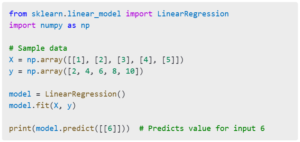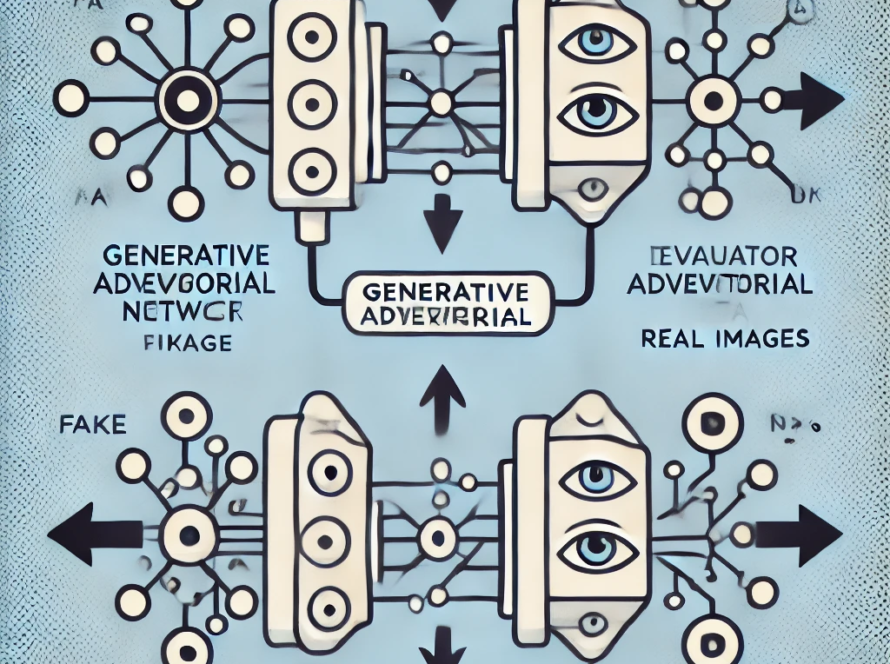Python is a high-level, interpreted programming language known for its simplicity, readability, and versatility. Created by Guido van Rossum in 1991, Python has gained immense popularity across various domains, including web development, artificial intelligence, data science, automation, and more.
Python is dynamically typed and garbage collected, supporting multiple programming paradigms like procedural, object-oriented, and functional programming. It is often referred to as a “batteries included” language because of its comprehensive standard library.
Python stands out from other programming languages due to its:
- Python’s simple syntax resembles natural language, reducing the learning curve.
- A vast ecosystem of libraries and frameworks enhances its functionality.
- A large, active community ensures continued development and troubleshooting support.
- Python runs on multiple platforms without modification.
- It seamlessly integrates with other languages and technologies like C, Java, and .NET.
Python is a versatile language applied in multiple fields, including:
1. Web Development :–
- Frameworks like Django and Flask make web development efficient.
2. Data Science & Analytics:–
- Libraries such as Pandas, NumPy, and Matplotlib enable data manipulation and visualization.
3. Artificial Intelligence & Machine Learning:–
- TensorFlow, PyTorch, and Scikit-learn power AI and ML applications.
4. Automation & Scripting:–
- Python is widely used for automating tasks and scripting.
5. Game Development:–
- Pygame and other frameworks help in developing interactive games.
6. Cybersecurity:–
- Python is a go-to language for ethical hacking and penetration testing.
7. Embedded Systems & IoT:–
- Python is used in Raspberry Pi and other embedded systems.
8. Finance & Trading:-
- Python is heavily used in the finance sector for algorithmic trading, risk management, and financial analysis.
9. Cloud Computing & DevOps:-
- Python is a key player in cloud computing, with tools like AWS Boto3, Google Cloud SDK, and Azure SDK.
10. Scientific Computing & Research:-
- Used in astronomy, physics, chemistry, and bioinformatics for data analysis and simulations.
11. Mobile App Development:-
- While not the first choice, frameworks like Kivy and BeeWare allow mobile app development in Python.
12. Backend API Development:-
- Python is widely used for building RESTful and GraphQL APIs with frameworks like Django REST Framework (DRF) and FastAPI.
Advantages:
- Python’s clean syntax makes it easy for beginners to learn and for experienced developers to write efficient code.
- A vast global community contributes to continuous development, troubleshooting, and support.
- Python offers a rich set of libraries for data science, machine learning, web development, and more.
- Python is widely used for prototyping due to its ease of writing and debugging code.
- Code written in Python runs seamlessly across different operating systems with minimal modifications.
- Python enables efficient task automation and scripting, improving productivity and efficiency.
- Python skills are highly sought after in industries such as AI, finance, healthcare, and data science.
Disadvantages:
- As an interpreted language, Python is slower compared to compiled languages like C++ or Java.
- Python uses more memory, making it less efficient for memory-intensive applications.
- Although Python can be used for mobile apps (via Kivy or BeeWare), it is not the first choice for mobile development.
- Python’s execution speed and garbage collection make it less ideal for real-time systems and applications requiring high performance.
- Python’s dynamically typed nature can lead to runtime errors that would be caught at compile-time in statically typed languages.
Python for Artificial Intelligence:-
This AI with Python Technology covers the fundamental and advanced artificial intelligence (AI) concepts using Python. Whether you’re a complete beginner or an experienced professional, this tutorial offers a step-by-step guide to mastering AI techniques.
Python provides a clear and readable syntax hence provides a smooth path to learn and build intelligent models without complex code structures.
- Rich ecosystem of AI and ML libraries (TensorFlow, PyTorch, Scikit-learn).
- Readable syntax for easy model development.
- Extensive community support for AI & ML projects.
- Pre-built modules for deep learning, NLP, and image processing.
Example: A simple AI-based model in Python using TensorFlow:

Python for Machine Learning:-
This article is designed to take you on a journey from the basics of Python programming to the intricate world of machine learning models. Whether you’re a beginner curious about this field or a seasoned professional looking to refine your skills, this roadmap aims to equip you with the knowledge and practical expertise needed to harness the full potential of Python in solving complex problems with machine learning
Python is preferred for ML for several key reasons, which collectively contribute to its popularity and widespread adoption in the field:
- Known for its readability and simplicity, making it easy for beginners to grasp and valuable for experts due to its clear and intuitive syntax.
- Its simplicity accelerates the development process, allowing developers to write fewer lines of code compared to languages like Java or C++.
- Python offers a rich ecosystem of libraries and frameworks tailored for machine learning and data analysis, such as Scikit-learn, TensorFlow, PyTorch, Keras, and Pandas.
- These libraries provide pre-built functions and utilities for mathematical operations, data manipulation, and machine learning tasks, reducing the need to write code from scratch.
- Python has a large and active community, providing ample tutorials, forums, and documentation for support, troubleshooting, and collaboration.
- The community ensures regular updates and optimization of libraries, keeping them up-to-date with the latest features and performance improvements.
- Python’s flexibility makes it suitable for projects of any scale, from small experiments to large, complex systems, and across various stages of software
- development and machine learning workflows.
- Simple syntax reduces development time.
- Powerful ML libraries like Scikit-learn, TensorFlow, PyTorch, and Keras.
- Vast community & documentation for continuous learning.
- Flexibility for handling both small and large-scale ML projects.
Example: A simple Linear Regression model using Scikit-learn:

| Feature | Python | Java | JavaScript | C++ | C# |
| Ease of Learning | ✅ Very Easy | ❌ Medium | ✅ Easy | ❌ Hard | ❌ Medium |
| Performance | ❌ Slow | ✅ Fast | ✅ Fast | ✅ Very Fast | ✅ Fast |
| Web Development | ✅ Django, Flask | ❌ Spring | ✅ Node.js | ❌ Limited | ✅ ASP.NET |
| Machine Learning | ✅ TensorFlow, PyTorch | ❌ Limited | ❌ No | ❌ No | ❌ No |
| Mobile Development | ❌ Weak (Kivy) | ❌ Android Only | ✅ React Native | ❌ No | ✅ Xamarin |
| Game Development | ✅ Pygame | ❌ Limited | ✅ Phaser | ✅ Unreal, Unity | ✅ Unity |
| Memory Efficiency | ❌ High Usage | ✅ Good | ✅ Good | ✅ Best | ✅ Good |
| Multi-threading | ❌ Limited (GIL) | ✅ Strong | ✅ Strong | ✅ Strong | ✅ Strong |
| Community Support | ✅ Large | ✅ Large | ✅ Large | ✅ Large | ✅ Medium |
Conclusion:
Python is a powerful, versatile, and user-friendly language that continues to dominate the tech industry. Whether you’re working on AI, ML, data science, automation, or web development, Python offers the best tools and libraries to accelerate development.
Python’s simplicity, vast ecosystem, and strong community support make it the perfect language for both beginners and experienced developers. However, for real-time, high-performance applications, languages like C++, Java, and JavaScript might be better choices.



